How to choose a gravel Bike
Choosing the right gravel bike is an exciting journey that can greatly enhance your cycling adventures. Gravel biking, a rapidly growing discipline, offers a blend of on-road and off-road exploration, making it essential to select a bike that aligns with your riding style and preferences.
There are several essential factors to consider when looking for the perfect gravel bike. From defining your riding objectives and understanding the various types of gravel bikes to evaluating frame materials, components, and features.
This guide will provide you with the information needed to make an informed decision. Whether you’re a seasoned cyclist looking to expand your horizons or a newcomer eager to embrace the world of gravel riding, understanding How to choose a gravel bike as your first move is essential to enter a world full of exhilarating adventures.
What Is a Gravel Bike?
A gravel grinder, or adventure bike, is versatile and adaptable for riding on various terrains, including gravel roads, dirt trails, and pavement. It combines elements of road and mountain bikes to offer riders a comfortable and efficient experience on mixed surfaces.
Gravel bikes typically feature endurance-focused geometry, wider tire clearances, and a robust build, making them perfect companions for exploration, long-distance rides, bike packing adventures, and all-terrain cycling challenges. Whether you are seeking new off-road adventures or versatile urban commuting, a gravel bike can be your go-to choice.
Is a Gravel Bike Right for You?
If you’re considering venturing off the beaten path, exploring unpaved surfaces, or embarking on overnight bike trips, the question of whether a gravel bike suits your needs might arise. In this guide, we’ll help you make that decision.
When to Consider Getting a Gravel Bike
If you want to:
Mostly ride unpaved surfaces: If your cycling adventures take you along dirt or gravel roads, 4×4 tracks, or even stretches of smooth singletrack, and you occasionally transition to pavement to connect your routes, a gravel bike is an excellent choice. This versatility allows you to explore diverse terrains comfortably.
Engage in bikepacking: A gravel bike becomes even more appealing if you’re drawn to multiday touring that includes unpaved surfaces and requires attaching bags to your bike frame. Its capacity to handle added cargo makes it ideal for bikepacking adventures.
If you’re considering venturing off the beaten path, exploring unpaved surfaces, or embarking on overnight bike trips, the question of whether a gravel bike suits your needs might arise.
When to Consider Other Bike Types
However, if your cycling preferences align more closely with the following scenarios:
Mostly ride paved roads: If your primary focus is on paved roads and occasionally very smooth unpaved ones, especially for fitness, recreation, or competition, you might find an endurance bike more suitable. These bikes are designed for comfort and efficiency on smoother surfaces.
Primarily engage in multiday tours on the pavement: A touring bike is a better fit for those who predominantly embark on multiday tours on well-paved routes. Touring bikes are optimized for carrying heavy loads and providing stability during long journeys.
Do You Need a Gravel Bike?
However, if your cycling preferences align more closely with the following scenarios:
Mostly ride paved roads: If your primary focus is on paved roads and occasionally very smooth unpaved ones, especially for fitness, recreation, or competition, you might find an endurance bike more. These bicycles are designed to offer comfort and optimal performance on well-maintained surfaces.
Primarily engage in multiday tours on the pavement: A touring bike is a better fit for those who predominantly embark on multiday tours on well-paved routes. Touring bikes are optimized for carrying heavy loads and providing stability during long journeys.
Typical Gravel Bike Features
Typical gravel bike features
Suppose you’re considering diving into the world of gravel biking. In that case, it’s essential to familiarize yourself with the common features that make these bikes versatile and well-suited for off-road adventures. Here’s a quick primer on typical gravel bike features:
-
Frame, Wheels, and Components Balance:
Gravel bikes are designed with frames, wheels, and components that balance lightweight and sturdiness. This balance ensures durability while maintaining agility, allowing you to tackle diverse terrains confidently.
-
Drop (Curled) Handlebar:
Traditionally, gravel bikes feature drop handlebars, providing multiple hand positions for comfort during long rides. However, some models are now available with flat handlebars, catering to riders who prefer a more upright riding posture.
-
Disc Brakes:
Gravel bikes come equipped with disc brakes, providing numerous advantages. They provide reliable stopping power in all weather conditions, ensuring safety during wet or muddy rides. Additionally, disc brakes make it easier to control your bike on rough and uneven terrain.
-
Wider Wheels and Tires:
Road bike wheels and tires are wider than road bikes, providing stability and improved traction on gravel, dirt, and uneven surfaces. These tires often have a treaded or knobby pattern to enhance durability and grip.
-
Versatile Geometry Options:
Gravel bikes come with various geometry options to cater to different riding preferences. Some models feature nimble and efficient geometry, ideal for spirited rides, while others offer a more relaxed and stability-oriented design for long-distance comfort.
-
No Suspension (in Most Instances):
Most gravel bikes do not feature front or rear suspension systems, unlike mountain bikes. The absence of suspension helps keep the bike lightweight and efficient, making it well-suited for mixed-terrain riding.
Suppose you’re considering diving into the world of gravel biking. In that case, it’s essential to familiarize yourself with the common features that make these bikes versatile and well-suited for off-road adventures. Here’s a quick primer on typical gravel bike features:
Gravel Bike Function
Gravel bikes are the ultimate choice for riders who crave versatility and adventure on two wheels. These bikes are meticulously designed to excel in various riding scenarios, offering options for fitness enthusiasts, adventure seekers, and competitive and non-competitive event riders.
- Long-Distance Travel:
Gravel bikes are built to allow riders to embark on long journeys spanning various terrains. Whether planning an epic day of exploration or a multiday bikepacking adventure, these bikes provide the endurance and comfort needed for extended rides.
- Diverse Terrain Capability:
An inherent characteristic of gravel bikes is their versatility on various terrains. They are equally at home on rough 4×4 paths and smooth gravel roads. These bikes can even handle occasional smooth singletrack sections, making them versatile companions for riders who love mixing it up.
- Efficiency on Pavement:
While excelling on unpaved surfaces, gravel bikes are also efficient companions on paved roads. They effortlessly transition between different types of terrain, making them suitable for rides that involve gravel and pavement. This versatility ensures that you can explore various routes without limitation.
- Not for Singletrack Terrain:
It’s important to note that gravel bikes are not designed for rides primarily focused on singletrack terrain, which is typical of mountain biking. Their capabilities shine brightest when navigating mixed-terrain routes rather than technical off-road trails.
- Bike packing and Accessories:
Gravel bikes are well-equipped for riders seeking long rides or planning multiday bike packing trips in remote areas. They often feature extra mounts for accessories such as bike frame bags, additional water bottle cages, and bike cargo racks.
These additional attachment points enable riders to carry essential gear and supplies, making them self-sufficient on their adventures.
In essence, the function of a gravel bike is to be a versatile and adventurous companion for cyclists of all levels. Whether you’re seeking a challenging fitness ride, an off-road adventure, or a long-distance exploration, a gravel bike is designed to provide comfort, capability, and adaptation.
Gravel bikes are the ultimate choice for riders who crave versatility and adventure on two wheels. These bikes are meticulously designed to excel in various riding scenarios, offering options for fitness enthusiasts, adventure seekers, and competitive and non-competitive event riders.
Key Gravel Bike Buying Decisions
When it comes to buying the best gravel bikes, there are several key decisions you’ll need to make to ensure you get the right bike for your needs and preferences. Gravel riding offers a spectrum of experiences, from long-distance endurance events to multiday bike packing trips, and the bikes themselves vary accordingly. Here are the critical factors to consider:
- Gravel Bike Geometry and Frames:
- Road Bike-Like Geometry:
Quicker and agile handling.
Responsive steering at higher speeds.
This wheel fits tires with a width of up to 40 millimeters.
Typically takes 700c (road bike diameter) wheels.
Suitable for longer organized events, everyday off-road riding, and faster group rides.
- Mountain Bike-Like Geometry:
More stability at high speeds.
They are designed for rough or challenging terrain, including easy singletrack trails.
With loaded gear, it performs well.
It can accommodate either 650b (27.5-inch diameter) wheels or traditional 700c (29-inch) wheels.
- Tire Clearance and Wheels:
Tire width is a crucial determinant of terrain capability.
Gravel bike tires range from 32 mm to 50 mm (700c wheels) or up to 54 mm (650b wheels).
Tire tread patterns vary for different conditions.
Tire clearance is the maximum tire width a bike frame or fork can accommodate.
Consider terrain: 40 mm tires on 700c wheels are suitable for most gravel roads, while rough terrain or bikepacking may require wider options like 700c x 47 mm or 650b x 55 mm.
Tubeless tires offer better traction and fewer pinch flats; look for bikes labeled “TLR” or “TR” (tubeless ready) or “TCS” (tubeless compatible system).
- Frame Materials:
Choose from aluminum, carbon fiber, or steel frames.
Aluminum frames offer a smooth ride and are cost-effective.
Carbon fiber frames provide a comfortable ride and are lighter but more expensive.
Steel frames are heavier but offer a smooth, vibration-absorbing ride and are economical.
- Gearing:
- 1x (One-By) Crankset:
Single chainring in front.
It is Paired with 10- to 12-speed cassettes.
Simple: avoid cross-chaining.
Better chain retention.
Suitable for variable off-road terrain.
It may offer fewer gears for intense competitive riding.
- 2x (Two-By) Crankset:
Two chainrings in front.
It is Paired with 10- to 12-speed cassettes.
It Provides a variety of gear combinations ranging from 20 to 24.
It Provides more top-end gears for flat terrain or road riding.
It is popular for gravel bikes with heavy loads.
- Brakes:
All reliable modern gravel bikes feature disc brakes.
Hydraulic disc brakes offer progressive and strong braking with less finger effort.
Cable-actuated (mechanical) disc brakes are more affordable, easier to service, and suitable for remote areas.
Hybrid disc brakes combine cable-actuated and hydraulic elements for more power and affordability.
Hydraulic brakes reduce hand fatigue and offer better bike control.
- Brake Levers and Gear Shifters:
Some bikes integrate brake levers and gear shifters.
SRAM and Shimano are major component manufacturers with different shifter and brake lever setups.
Test ride to find the style that suits your grip and hand size.
- Frame Mounts:
Consider accessory mounts for extra water bottle cages, frame bags, and racks.
Assess your riding needs, as not all bikes include extra mounts.
- Getting the Correct Frame Size:
Choose the right frame size for comfort and handling.
Manufacturers provide size guidelines based on height, but proportions matter.
Experienced salespersons can help with fitting.
Compare reach and stack measurements across models for precise sizing.
- Accessories:
Budget for pedals, cycling shoes, and a tool kit.
Frame bags for carrying tools, snacks, and gear are popular.
Ensure the frame bag fits your bike’s frame.
- Versatility:
Gravel bikes are versatile and adaptable to various riding styles.
Consider your primary use: commuting, touring, bikepacking, or racing.
The frame geometry, build, and accessory mounts vary based on the intended use.
- Suspension (Optional):
While most gravel bikes are rigid, some feature lightweight suspension forks.
Suspension forks offer comfort and control on rough terrain but add weight.
Innovative designs like Specialized’s Future Shock provide suspension at the handlebar.
- Cockpit:
Gravel bikes come with drop-style or flat handlebars.
Handlebar width, shape, and flare affect handling and stability.
Consider handlebar tape and compliant seat posts for added comfort.
- Wheel Size:
Choose between 700c and 650b wheels.
700c wheels offer greater rolling speed, while 650b wheels provide more cushion and traction.
Personal preference plays a role in wheel size selection.
- Tires:
Gravel tires vary in width, tread pattern, and air volume.
Choose tire width based on your riding terrain and frame clearance.
Tubeless tires offer better traction, fewer flats, and the option to run lower pressures.
- Build:
Gravel bikes come in various price points based on frame material and components.
Decide your budget and prioritize components accordingly.
Custom builds allow you to select components for a personalized setup.
Making informed decisions in these areas will help you find the perfect gravel bike that suits your riding style, terrain preferences, and budget. Whether you’re exploring gravel roads, bikepacking, or racing, there’s a gravel bike out there tailored to your needs.
Gravel bike tire size
While the previous standard for gravel bike tire width was approximately 35mm, the new norm has shifted to 40mm, and this size is now commonly found as the stock option on most modern gravel bikes.
For riders who venture onto exceptionally challenging terrain, there’s the choice to go for wider options like 42mm or 45mm tires or even consider switching to 650b wheels to accommodate even larger tires.
How much should I spend on a gravel bike?
Gravel bikes are available across a wide price range, starting from under $1,000 and going up to over $10,000. However, most mainstream gravel bikes fall within the $1,500 to $3,500 range. It’s important to note that higher-priced models often offer lighter frames and come equipped with top-tier wheels and components.
Once you’ve established your budget, the next step is to consider the riding you intend to do with your gravel bike.
What is the perfect gravel bike drivetrain? 1x, 2x, mechanical or electronic?
The perfect gravel bike drivetrain choice, whether 1x or 2x, electronic or mechanical, depends on your specific riding preferences and needs. Each option has its advantages and disadvantages, so let’s break down the considerations for each:
1x Drivetrain:
- Advantages:
-
- A simplified setup with only one front chainring reduces the risk of dropped chains and makes maintenance easier.
-
- Wide gear range, often similar to a compact 2x setup, thanks to large cassettes (e.g., 10-52T).
-
- Lighter weight due to fewer components.
-
- Less susceptible to defects.
- Disadvantages:
-
- Larger gear jumps between shifts with a wide-range cassette.
-
- Limited fine-tuning of gears for competitive riding.
1x drivetrains have become popular in the gravel sector for their simplicity, wide gear range, and reduced maintenance.
2x Drivetrain:
- Advantages:
-
- Smaller gear steps between shifts suit mixed terrain, including road riding.
-
- Wide gear range with the right setup (e.g., compact crankset and 32T cassette).
-
- Similar to traditional road bike drivetrains.
- Disadvantages:
-
- Increased shifting frequency.
-
- Slightly more maintenance is required.
-
- Reduced reliability when shifting between chainrings in rough terrain.
2x drivetrains are suitable for gravel bikes with significant road riding and those who prefer smaller gear steps.
Electronic vs. Mechanical Shifting:
- Electronic Shifting (e.g., Shimano Di2, SRAM eTap):
-
- Advantages:
-
-
- Reliability and robustness.
-
-
-
- Easy and precise shifting.
-
-
-
- Some systems allow charging while riding (Shimano).
-
-
- Disadvantages:
-
-
- It Requires battery management and occasional charging.
-
-
-
- Higher initial cost.
-
- Mechanical Shifting:
-
- Advantages:
-
-
- Simplicity and lower cost.
-
-
-
- No need for battery management.
-
-
-
- Wider availability of components and repairs.
-
-
- Disadvantages:
-
-
- It may require more effort to shift.
-
-
-
- It is less precise than electronic shifting.
-
Electronic shifting has gained popularity in gravel biking due to its reliability and ease of use, but mechanical shifting remains a viable and cost-effective option.
Frame Materials:
- Aluminum :
-
- Cost-effective and stiff.
-
- You may need more comfort on rough terrain.
- Carbon Fiber (CFRP):
-
- Lightweight and tunable for stiffness and compliance.
-
- Susceptible to damage and defects.
- Steel:
-
- Durable and tough.
-
- Damping properties vary with tube selection.
- Titanium:
-
- It’s expensive but lightweight.
-
- Excellent damping and corrosion resistance.
Frame material choice depends on your budget, preferences, and intended use. Carbon offers lightweight versatility, while steel and titanium provide durability and comfort.
What is the best material for a gravel fork?
The best material for a gravel fork depends on your specific needs and preferences. Each material offers unique characteristics, and your decision should be based on comfort, weight, durability, and budget. Here’s a breakdown of the materials commonly used for gravel bike forks:
Aluminum Forks:
Advantages:
Cost-effective option.
Suitable for increasing tire clearance or changing the handling of a low-end bike.
It may feature mounts for bottle cages or fenders.
Disadvantages:
Generally, poor damping properties can result in a less comfortable ride.
Heavier compared to other materials.
There are limited aftermarket options since most stock bikes come with carbon forks.
Aluminum forks are a budget-friendly choice for specific upgrades or modifications but may lack other materials’ comfort and lightweight properties.
Carbon Forks:
Advantages:
It has Excellent tuning potential with various geometries and features available.
Lightweight, improving overall bike weight.
Generally offers a comfortable ride.
Disadvantages:
Be cautious of carbon forks with aluminum steerer tubes, as they may have inferior damping properties.
Carbon forks are popular for their versatility, lightweight nature, and comfort. They offer numerous aftermarket options to suit different needs and preferences.
Steel Forks:
Advantages:
Excellent damping properties while still maintaining lateral stiffness.
It Protects the frame in the event of head-on impacts.
It can be straightened in case of minor deformations.
It often features mounts for cages, luggage racks, and mudguards.
Disadvantages:
Generally heavier than carbon forks.
It has Limited aftermarket options, but custom options are available from frame builders.
Steel forks are known for their durability, comfort, and protective properties. They are a robust choice for riders looking for specific geometry or features.
Titanium Forks:
Advantages:
It offers unparalleled damping properties, providing an exceptionally comfortable ride.
Lightweight and durable.
Highly resistant to corrosion.
Disadvantages:
Among the most expensive options.
Limited aftermarket range; typically, custom forks are made by frame builders.
Titanium forks are the premium choice for riders seeking the utmost comfort and durability. While they come at a higher cost, they offer a unique riding experience and exceptional longevity.
The best material for a gravel fork depends on your priorities. Aluminum may suffice if you’re on a budget and looking for an upgrade with increased tire clearance or specific features.
Carbon forks are versatile, lightweight, and comfortable, making them popular. Steel forks balance durability and comfort, ideal for riders with specific requirements. Titanium forks offer the ultimate comfort and longevity but come at a premium price. Consider your riding style, terrain, and budget when making your decision.
How important are aerodynamics on a gravel bike?
What we found at the start of 2020 remains the same: aero matters significantly, but not when it comes to gravel bikes.
While some bikes incorporate aerodynamic elements, the primary culprits for wind resistance are the large frontal surfaces of 700 x 40C tires, the disruption caused by rugged tread patterns, externally routed cables, and the naturally more upright riding position.
So, don’t fuss too much about aerodynamics – instead, embrace the refreshing breeze as it rustles through your flannel shirt!
Which handlebars make sense on a gravel bike?
There are no strict rules, and they can’t be easily categorized. They come in various configurations, including different wheel sizes and handlebar options, making them versatile and adaptable to different riding preferences. While drop handlebars are common on gravel bikes, flat mountain bike handlebars also have their place.
Drop Handlebars (Road Bike Handlebar): Gravel bike riding often involves less-than-ideal road conditions, prioritizing control and comfort over factors like aerodynamics and weight. Manufacturers have responded by offering a variety of suitable handlebars.
Many of these handlebars have a slight flare, with the drops curving slightly outward. This design positions your hands wider apart in the drops compared to the hoods, providing better control in technical terrain and boosting your confidence.
Gravel bike handlebars are typically wider than those found on standard road bikes. The handlebar’s drop, reach, damping, stiffness, and shape can vary significantly between models, so experimentation is key to finding what suits you best.
Opinions also differ on materials, with carbon handlebars offering better damping but potentially less control if they flex excessively and are more delicate. Aluminum handlebars are a more robust and cost-effective choice but provide less damping. Common gravel handlebars include the Easton EC70 AX, Ritchey WCS Butano, Ritchey WCS Carbon VentureMax, and Acros Gravel Bar.
Flat Handlebars (Mountain Bike Handlebar): For some riders, a flat mountain bike handlebar can be a practical alternative to drop bars. There are several advantages to using a flat bar on a gravel bike. First, it provides more space for handlebar bags, enhancing bike packing capabilities.
Second, it offers superior control when tackling rough terrain and descents, as your hands have a secure grip with the brakes always within easy reach. Using a flat bar also equates your gravel bike with mountain bike-specific components such as brakes and shifters.
Examples of gravel bikes that come with flat handlebars as standard options include the Norco Search XR (offering a flat bar version called the Norco Search XR Flat Bar) and the ROSE BACKROAD (offering a flat bar model known as the ROSE BACKROAD MULTI CROSS).
Ultimately, the choice between drop handlebars and flat handlebars for your gravel bike depends on your riding preferences and the terrain you’ll encounter on your adventures.
The best brakes for a gravel bike
Disc brakes have become the standard choice for gravel bikes, and their advantages outweigh any potential downsides. Gravel bikes benefit significantly from disc brakes due to their superior braking power, modulation, and reliability.
While most gravel bike disc brakes operate hydraulically, a few exceptions, such as the RONDO BOGAN, use mechanical brakes. However, it’s important to note that the modulation and ultimate stopping power of mechanical disc brakes typically can’t match the performance of hydraulic models.
Selecting the right brake size, particularly rotor size, is crucial for your intended riding purpose. Generally, the front and rear rotors should have a diameter of at least 160 mm. If you plan on bike packing with a loaded bike, opting for a 180 mm rotor on the front wheel can provide additional stopping power and heat dissipation, which can be advantageous in such scenarios.
Gravel bike seat posts – Classic, suspended, or a dropper?
Gravel bike seat posts come in various types, each with its own set of advantages and considerations:
Carbon Seat posts: Carbon seat posts are known for providing vibration damping and impact absorption, contributing to enhanced ride comfort. It’s important to note that not all carbon seat posts are created equal. Models designed for compliance and comfort often feature a specialized carbon layup, sometimes consisting of multiple distinct sections to offer increased flex.
This flex allows the seat post to absorb impacts, particularly when extended. Carbon seat posts are a common feature on higher-priced complete bikes and can also be found in the aftermarket. Some examples of aftermarket models are the Ergon CF3 Pro, Ritchey WCS Carbon Link Flexlogic, or Syntace P6 Carbon HiFlex.
Aluminum Seat posts: Aluminum seat posts, while generally less comfortable due to their stiffer nature than carbon, are a suitable choice if you use a large saddlebag attached to the seat post most of the time.
The added weight of the saddlebag can offset the benefits of a compliant carbon post. Additionally, the abrasion from the bag rubbing against the seat post can be a concern, especially in dusty or muddy conditions.
Many reputable brands offer reliable aluminum seat posts, including Thomson, Tune, and Syntace.
Suspended Seat posts: Suspended seat posts are another option to consider. These seat posts incorporate some form of suspension or damping mechanism to enhance comfort. They are particularly useful for riders seeking additional cushioning on rough terrain. However, further details on this topic are discussed in the section on Suspension on gravel bikes.
Dropper Posts: A dropper post can be a valuable addition if you frequently ride your gravel bike off-road. Dropper posts allow you to quickly lower your saddle height (typically 40 to 70 mm), providing more confidence and control on technical descents.
While dropper posts are essential in mountain biking, they are becoming increasingly popular in gravel riding. Many modern gravel frames feature stealth cable routing for dropper posts, allowing internal cable routing for a clean look.
It’s important to consider that dropper posts may come with a higher price tag, add some weight to your bike, and offer less compliance than traditional seat posts. Certain gravel bikes are even outfitted with dropper posts. as standard, such as the Fustle Causeway GR1, Norco Search XR C2, Marin Headlands 2, Evil Chamois Hagar, and Specialized S-Works Diverge.
Gravel bike suspension – What options are there?
Gravel bike suspension options cater to riders seeking enhanced comfort and control on rough terrain. Here’s an overview of the various suspension systems available:
Gravel Bike Suspension Forks:
Suspension forks on gravel bikes may initially seem unconventional, but offer benefits for certain riders. They effectively absorb impacts from roots, rocks, compressions, and ruts, maintaining stability and control.
The Cannondale Lefty is a well-known gravel suspension fork, offering an unconventional appearance but proven performance.
Other suspension fork options for gravel bikes include the FOX 32 AX and Lauf Grit.
Suspended Seat posts:
Suspended seat posts enhance rider comfort and reduce strain on the back when navigating gravel slopes.
Unlike carbon seat posts, their performance isn’t affected by extension length.
The EeSilk from Cane Creek features a parallelogram damping system that effectively absorbs small hits and continuous vibrations.
The Shock Stop Seat post from Redshift is designed for riders venturing into rougher terrain, offering maximum comfort. Test rides are recommended due to potential impacts on riding position.
Suspended Stems:
While not widely available, Suspended stems can provide additional cushioning for the hands and arms.
The Redshift Shock Stop stem complements the Shock Stop parallelogram seat post and has shown promising results in reviews.
Integrated Concepts for More Comfort:
Some brands integrate damping systems directly into their frames, suspending the rider while maintaining the frame’s role as a damper.
Specialized Future Shock 2.0 system, found on models like the Diverge and Roubaix, offers 20 mm of adjustable travel between the stem and top tube.
Cannondale’s KingPin system, as featured on the Topstone Carbon Lefty 1, enables the seat stays to pivot on the seat tube, providing up to 30 mm of travel through engineered frame flex.
Trek’s Domane features the IsoSpeed system, offering adjustable compliance by separating the seat tube from the top tube at the rear and the steerer tube from the head tube at the front.
BMC’s Micro Travel Technology (MTT) employs an elastomer between the seat stays and the tube, providing up to 10 mm of travel on models like the URS ONE, enhancing comfort.
These suspension options cater to various rider preferences and terrain challenges, allowing gravel cyclists to tailor their bikes for maximum comfort and control.
Types of Gravel Bikes
Gravel biking offers many options, catering to diverse preferences and terrains. Here are some common types of gravel bikes and their characteristics:
- All Road Bikes:
These bikes are similar to endurance road bikes and typically accommodate tires around 30 millimeters in width.
Examples include the Allied Alfa Allroad, Trek Domane, Scott Addict Gravel, and Liv’s Avail Advanced.
It is well-suited for riders who want a blend of road and gravel capabilities, offering speed and agility on smoother dirt roads.
- All-Arounder Gravel Bikes:
-
- It is the most common category, offering versatility for general gravel riding, gravel grinders, and mixed terrain.
-
- Typically, we accept tires ranging from 38mm to 45mm on 700c wheels.
-
- These bikes often feature extra mounts for bottles and bags, and some can be converted to “Monster Truckers” with 650b wheels and larger tires.
-
- Examples include the Salsa Warbird, known for its versatility and numerous mounts.
- Workhorse Gravel Bikes:
-
- Sturdy and stable, these bikes prioritize durability and comfort over lightweight performance.
-
- Ideal for carrying heavy loads, touring, and bike packing.
-
- The Surly Straggler and Norco Search XR are examples featuring multiple mounts for bags, racks, and fenders.
- Aero Gravel Bikes:
-
- Aero gravel bikes are designed with aerodynamics in mind, helping riders combat headwinds and maintain speed.
-
- These bikes feature aerodynamic profiles and are optimized for lower speeds (sub-20 mph).
-
- The 3T Exploro is a notable example, known for its aerodynamic design and impressive speed.
- Super Gravel Bikes:
-
- Super gravel bikes are built for remote adventures, offering clearance for wide mountain bike-sized tires (29 x 2.4″).
-
- They come equipped with numerous mounts for carrying gear and cargo, making them suitable for bike packing.
-
- These bikes have longer wheelbases and are slower-steering, akin to mountain bikes.
-
- Examples include the Salsa Cutthroat and Evil Chamois Hagar, offering stability and comfort on challenging terrain.
- Pedal Assist Gravel Bikes:
-
- These are e-bikes designed for gravel riding, with a pedal-assist system that provides extra power.
-
- The Yamaha Wabush is one such bike, offering four levels of power assist and a max output of 500 watts.
-
- Riders can achieve faster speeds and conquer hills with less effort but must consider battery range and event regulations.
How to choose a gravel bike size
Height Range T-shirt Frame Size Frame Size (cm) Frame Size (in)
143cm (4ft 8in) – 155cm (5ft 1in) XXS 44cm 13in (33cm)
155cm (5ft 1in) – 163cm (5ft 4in) XS 48cm 15in (38cm)
163cm (5ft 4in) – 170cm (5ft 7in) S 51cm 16in (41cm)
170cm (5ft 7in) – 178cm (5ft 10in) M 54cm 18in (46cm)
178cm (5ft 10in) – 183cm (6ft) L 56cm 19in (48cm)
183cm (6ft) – 191cm (6ft 3in) XL 58cm 20in (51cm)
191cm (6ft 3in) – 196cm (6ft 5in) XXL 60cm 21in (53cm)
196cm (6ft 5in) – 205cm (6ft 9in) XL 62cm 22in (56cm)
This table provides a clear reference for selecting the appropriate frame size based on your height. To know more details, also read how to choose a gravel bike size
Conclusion
We hope after reading this article How to choose a gravel bike is no more difficult for you. Selecting the right type of gravel bike depends on your riding preferences, terrain, and intended use, so choose accordingly to enjoy the best gravel biking experience.


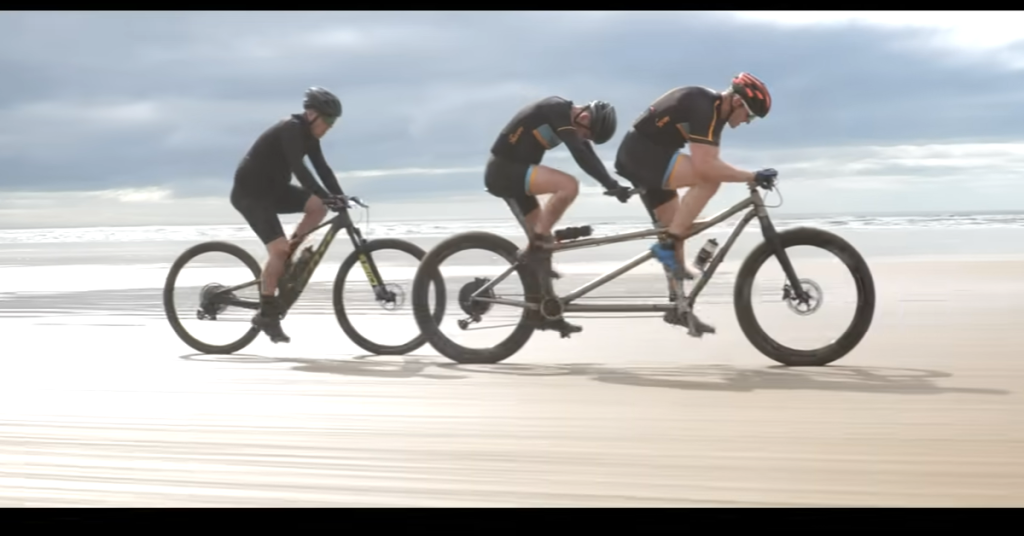

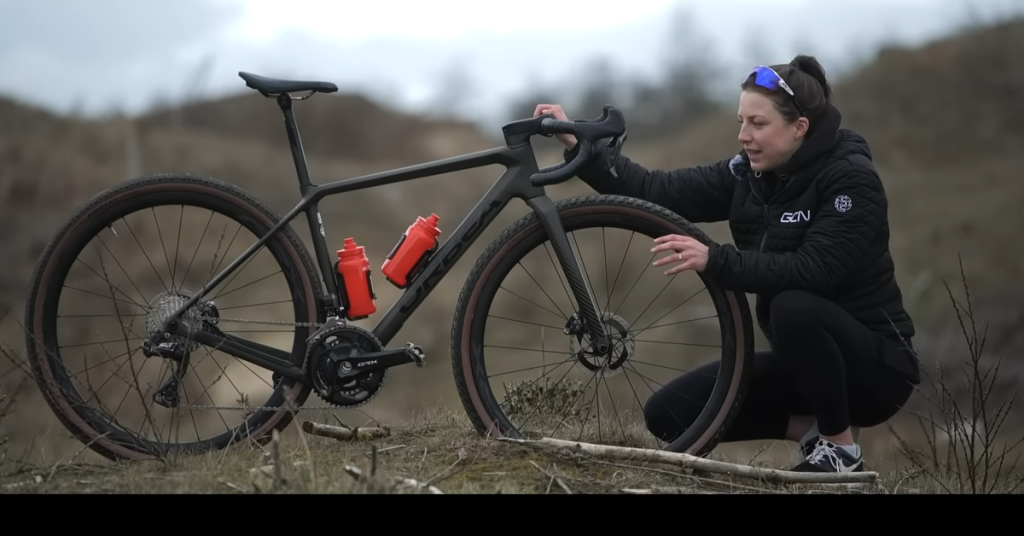
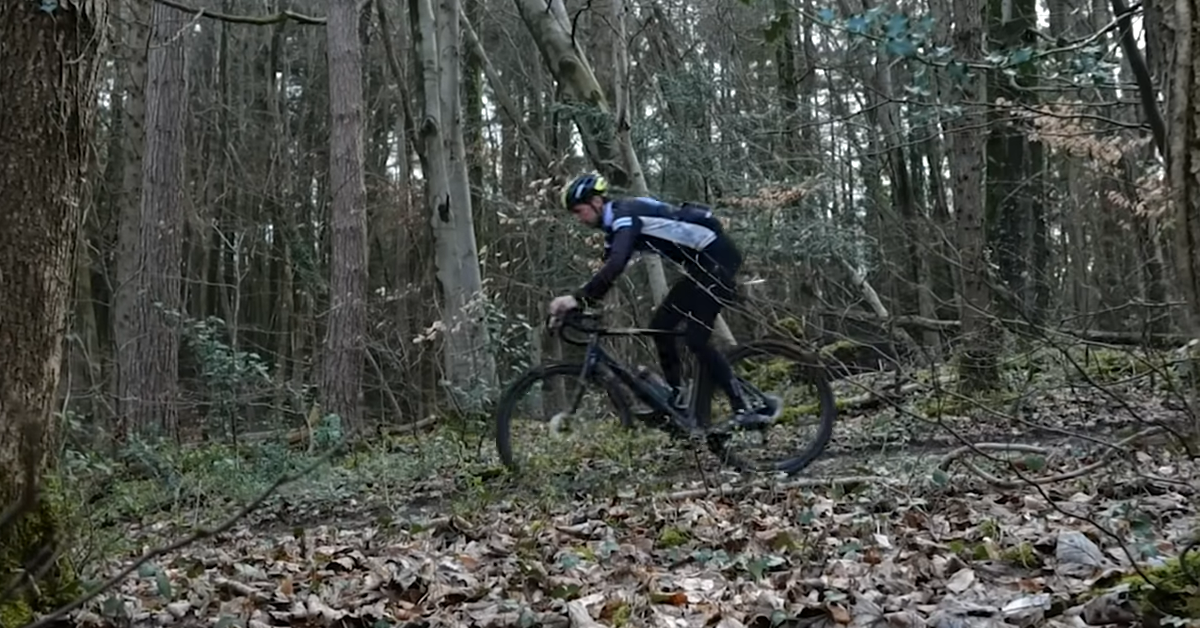

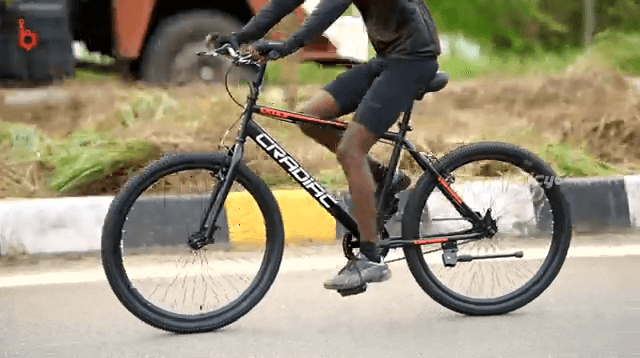

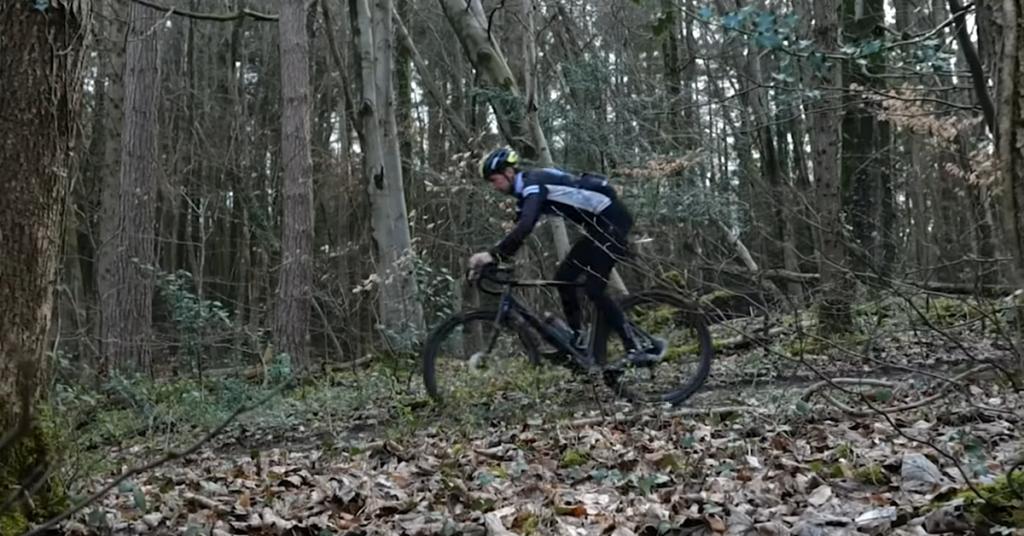
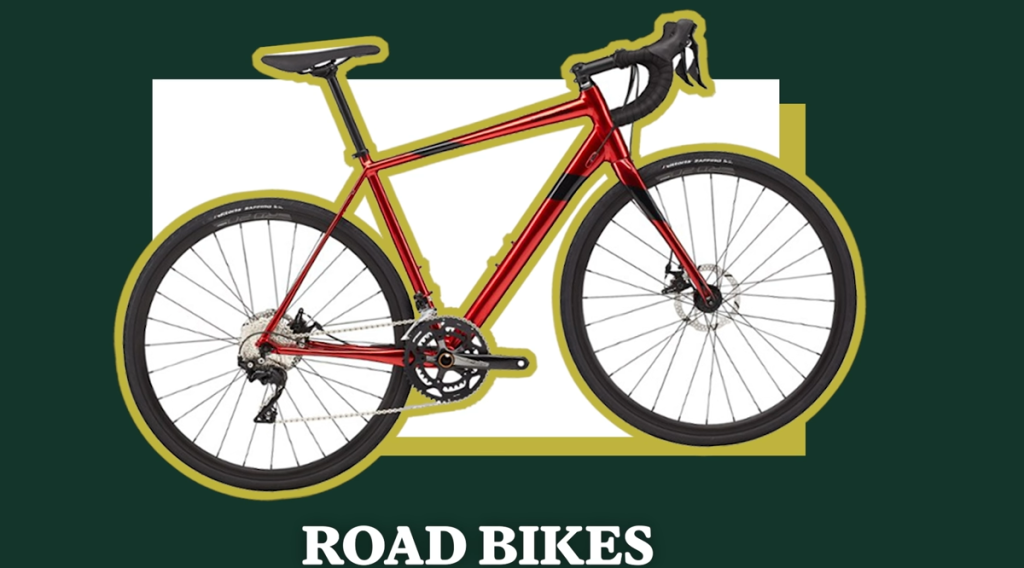
Pingback: shimano acera vs altus